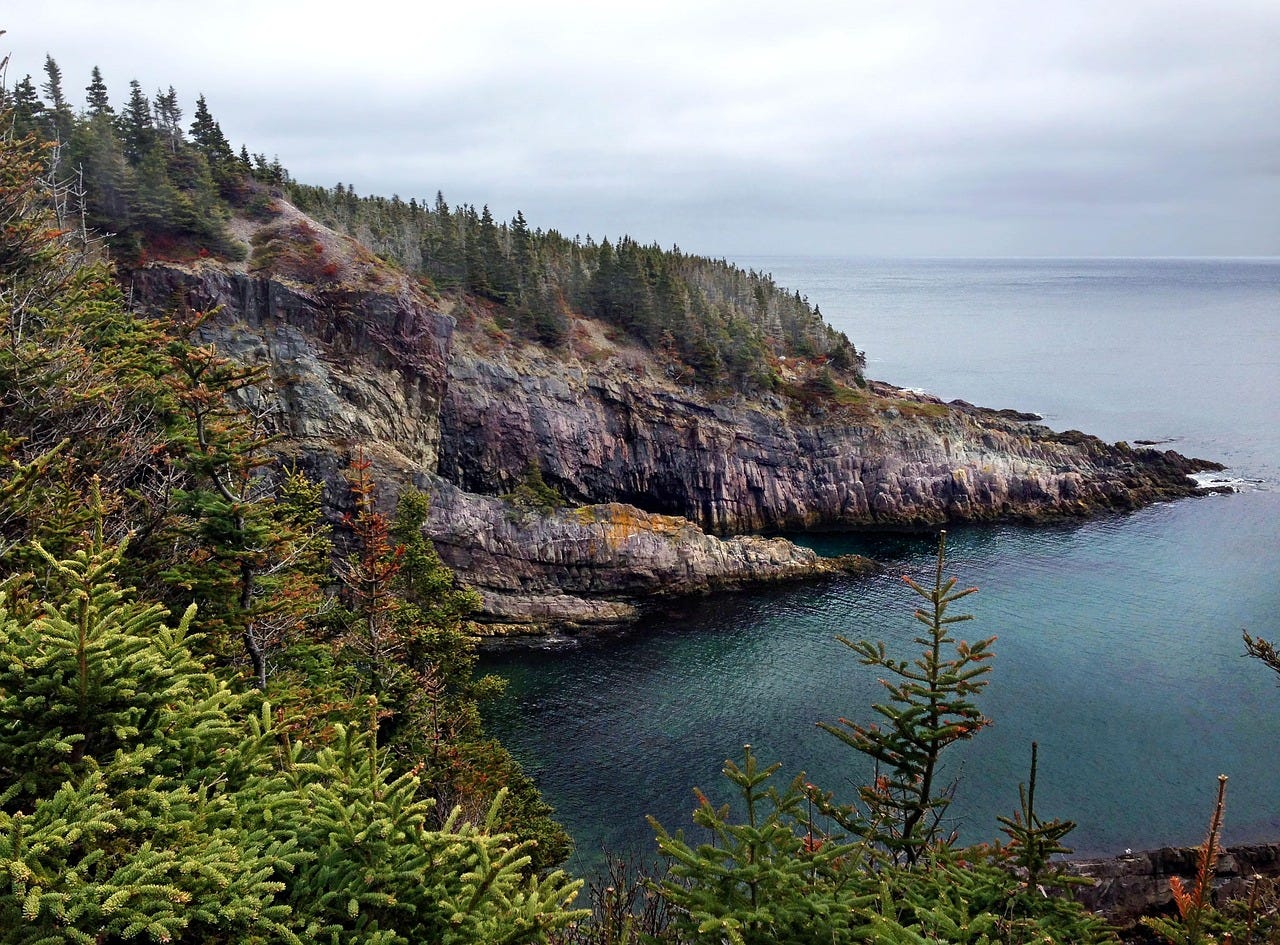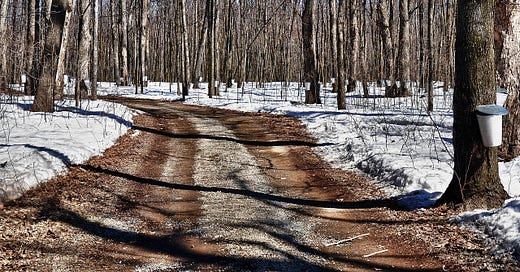Maple Syrup Mysteries, 2: How maples respond to new threats
Climate change rattles forests, confronting farmers with tough decisions. What will keep maple syrup flowing?
Dear Climate Culinarians,
Here’s a sweet thought for the cold nights of early spring: Frost is necessary to produce maple syrup. But how can we keep drizzling maple syrup over pancakes when the world is heating up? That’s what part 2 of my Maple Mysteries is about, plus actions you can take (including some pure fun ones!). Catch up if you missed part 1 - How Maple Syrup Is Made.
New here? Every month, Climate Culinarians picks one topic and publishes a series of newsletters about it (see the weekly structure here). This month is all about maple syrup. Subscribe to never miss a new post.

A shorter harvest, more pesky bugs, wildfires, new trees in the forest that grow faster than sugar maple trees. Climate change does not go easy on my supply of maple syrup! And farmers or forest owners can’t just uproot their big maple trees and take them elsewhere. That’s obvious. So let’s find out about less obvious solutions.
Will climate change make sugar maples move north?
I keep hearing about plants shifting to the north, seeking ideal growing conditions and escaping heat, drought, flooding and other consequences of climate change. Even the U.S. Department of Agriculture updated its Plant Hardiness Zone Map in 2023. A year later, I asked an expert what that means for sugar maple trees in the long term.
“They may shift north, although they will run into issues. As you get farther north in Canada, the soils are not as good for maples”, Joshua Rapp, forest ecologist at Mass Audubon and Harvard Forest, told me in the spring of 2024.

Rapp points to the Canadian Shield, a landscape that glaciers scraped clean after the last ice age. Today, its soil is thin, rocky and acidic. Sugar maples won’t appreciate any of that. The soil may also lack certain fungi. Trees form symbiotic relationships with fungi, and without them, seeds will have a hard time to grow into trees. So going north does not seem like a promising climate change solution for sugar maples.
How to strengthen a forest (and keep harvesting sugar maple sap)
According to Rapp, sugar maples will likely be able to survive further south, given there is enough rain. And there are actions that maple syrup producers can take to strengthen the trees:
Have many different kinds of trees grow in your forest, and make sure there are trees of different ages and heights.
Diversity increases the likelihook that you will still have a forest after disaster hits. If a storm rushes through, trees of different sizes and species won’t be vulnerable in the same way. Diseases and pests won’t kill every tree. And so on.
But this solution comes at a cost. After all, such a biodiversity haven will contain less mature sugar maples to harvest from.
“For forest adaptation, you want to have more species, and more different ages of trees in there. But that’s not necessarily what you want when you have to maximize your production in the short term”, says Rapp.
To tackle this problem - and the climate-induced shorter harvest season I wrote about last week - some farmers use vacuum pumps: They literally suck sap out of the trees. Much quicker than letting the sap drip, and less dependent on frost. However, the method comes with a catch.
Research suggests that tapping maple trees this heavily affects their growth. In the long run, these trees may be less healthy and productive and have a shorter life, says Rapp. “So there are trade offs between adaptation in the short term to keep production high versus the long term health of those forest stands and the resources to collect sap from in the future.”
Seems like once again, you can’t have a cake and eat it, too. Even if your cake is made with maple sugar.
Take action: What you can do to support maple tree research - and to enjoy maple season!
If you love maple syrup, there is so much to explore, especially in early spring.
See the forest … or a tree
Go for a walk in a forest and take a closer look at the trees. Are all the trees roughly the same size? Are there different kinds? How many? When you come back, share what you’ve observed.
Take part in citizen science. In Canada - where most maple syrup comes from - you can get involved in the Monitor My Maple Project. Volunteers pick one tree and report the dates when the buds break in the spring and the leaves start to change their color in the fall, measure the trunk, and more.
Find your maple community
Invite friends and family for a pancake party. Share stories about what maple syrup means to you. Exchange observations from forest hikes. Talk about biodiversity.
Support research. There are many characteristics scientists still have to examine to understand climate change impacts and test possible solutions - for instance, at the Acer Climate and Socio-Ecological Research Network (acer is the maple tree genus).
Indulge in maple culture
Visit a maple syrup festival and explore the culture around it. In the U.S., the biggest maple syrup producing state is Vermont, followed by New York. And there are lots of events in March! The Ganondagan Indigenous Winter Games & Maple Syrup Festival is on March 15, 2025, in Victor, NY. Vermont Spring Open House Weekend is on March 22-23, just like New York State Maple Weekend (also the weekend after). And the big Vermont Maple Festival is April 25-27.
Sweeten the deal. If you have access and can afford it, buy maple syrup directly from producers. You’ll support them making a living without a middleman. Plus, it’s fun!
What is your favorite activity during maple season?
Now that we’re stocked up on info bits and sweets, who wants to put their feet up and engross themselves in a book? Next week, I’ll send you my recommendations, one of them written by a radical … nope, you gotta wait and read.
Eat, read, repeat!
Petrina
Climate Culinarians is a project by me, Petrina Engelke. I write about climate, food and the U.S., and I help other writers turn their ideas into a book people want to read. In other words: I’m a journalist and a book coach. Read more about this newsletter & me here.



